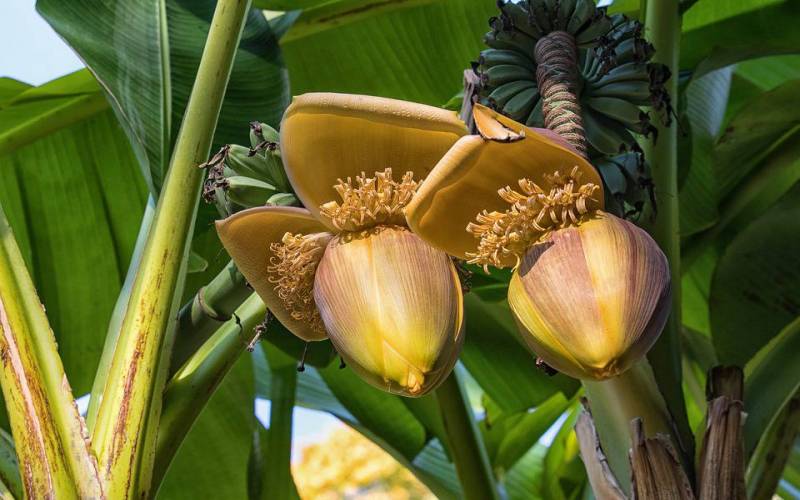Banana Tree, India
Despite the fact that the banana is not strictly a tree, its structure and size make it one. It has been customary to offer prayers to the Banana tree from the beginning of time. Because life cannot survive without trees, it is customary to plant them at Vaisakha, Magha, or Kartika Shukla Chaturdashi as a mark of thanks and fulfilment. It is stated that worshipping the tree with flowers, fruits, and other offerings ensures the family's well-being. It not only enhances the family's health, but it also gives prosperity and happiness to the home.
Since time immemorial, the banana has been India's most versatile and cherished fruit. It's the go-to fruit for practically every event thanks to its nativity, perennial plenty, and affordability, and the banana tree as a whole is profoundly knit into the country's cultural fabric. While indigenous species are grown in home gardens throughout India, they thrive both domestically and wild in places like Nagercoil, thanks to the warm, humid tropical climate and fertile, loamy soil conditions prevalent in the Western Ghats region of South India. The banana is one of the world's oldest and most widely cultivated fruits, having spread far and wide from its humble beginnings in India and Southeast Asia.
It's now one of the world's most popular fruits, and cosy and simple-to-make banana bread has been trending on Google searches all across the world, even during these pandemic times. According to historical accounts, Alexander the Great was enamoured with the unusual flavour of the kadali phalam (the Sanskrit name for the banana) and transported it from India to the Middle East, where Arab traders renamed it banan (an Arabic word for finger).





